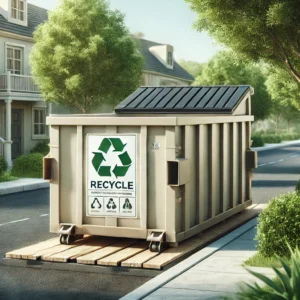
Finding a convenient recycling dropoff near me can significantly impact individual efforts towards sustainability. Many communities offer designated drop-off sites for recyclables, making it easier for residents to participate in recycling programs and reduce waste. Knowing where to find these locations is essential for anyone looking to make a positive environmental contribution.
Local government websites and recycling organizations typically provide updated information on drop-off sites. Additionally, community centers and waste management facilities may host recycling events that encourage participation. This accessibility not only simplifies recycling but also fosters a culture of environmental responsibility within neighborhoods.
As the push for greener practices continues to grow, accessing nearby recycling facilities has never been more important. Awareness of available resources allows individuals to act, ensuring that recyclable materials are diverted from landfills and repurposed effectively.
Finding Recycling Drop-Off Locations
Identifying nearby recycling drop-off locations can significantly enhance recycling efforts. Various resources, both local and digital, help individuals locate the nearest facilities.
Local Waste Management Resources
Many municipalities offer waste management services that include information about recycling drop-off sites. Residents can often find details on their city or county’s official website.
These sites typically provide:
- Addresses of drop-off locations
- Operating hours for convenience
- Accepted materials, ensuring proper sorting
Additionally, contacting local waste management offices directly can yield precise information. These offices may also sponsor community events that promote recycling, allowing residents to dispose of items responsibly.
Online Recycling Locators
Numerous online platforms assist individuals in finding recycling drop-off locations. Websites such as Earth911 and RecycleNation offer user-friendly search features.
To use these services:
- Input your ZIP code or city name.
- Review the list of nearby facilities.
- Check details like accepted materials and hours.
These tools provide valuable information about recycling options, making it simpler for residents to participate in recycling efforts. They also highlight eco-friendly practices and educational resources.
Mobile Apps for Recycling
Mobile applications have emerged as practical solutions for finding recycling drop-off locations. Apps like iRecycle and Waste Management’s My WM allow users to access recycling information on the go.
Key features of these apps include:
- GPS functionality to find nearest drop-off points
- Custom notifications about recycling days and events
- Material-specific guidelines for proper disposal
Using mobile apps makes it more convenient for individuals to engage in recycling, encouraging consistent participation in sustainable practices.
Preparing Recyclables for Drop-Off
Properly preparing recyclables for drop-off involves sorting items, cleaning them, and understanding how to handle hazardous materials. This ensures effective recycling and helps prevent contamination.
Sorting Recyclables
Sorting is crucial before dropping off recyclables. Individuals should separate items into the right categories:
- Plastics: Check the recycling symbol on the bottom. Common types include #1 (PETE) and #2 (HDPE).
- Metals: Aluminum cans and steel containers are typically accepted.
- Paper and Cardboard: Flatten boxes and keep paper free of plastic film or wax.
Using designated bins or boxes for each material can simplify the sorting process. It reduces time spent at the drop-off location and prevents contamination, making the recycling process more efficient.
Cleaning Guidelines
Cleaning recyclables is essential for successful recycling. Items should be rinsed to remove food residue. Here are key steps:
- Empty Containers: Ensure all liquid is discarded.
- Rinse: A quick rinse with water is usually sufficient.
- No Residue: Avoid leaving any food particles behind, as these can contaminate the batch.
Avoid using soap or harsh chemicals, as these might interfere with the recycling process. Clean items also help keep recycling facilities unclogged and less polluted.
Special Handling for Hazardous Items
Certain items require special handling to ensure safety during recycling. This includes:
- Batteries: Often contain toxic metals. Take these to designated drop-off centers.
- Electronics: Many components can be recycled but may need special processing.
- Paint and Chemicals: Follow local guidelines for disposal. Many places offer hazardous waste days for proper collection.
Always check local regulations to determine the correct procedures for handling these items. This helps protect the environment and promotes safe recycling practices.
Vaishno Devi Helicopter Ticket Price: A Comprehensive Guide for Pilgrims
Vaishno Devi is one of the most revered pilgrimage sites in India, attracting millions of …